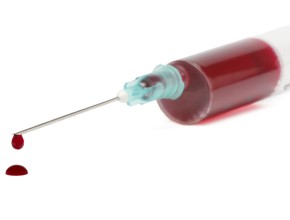Blood pressure targets in people with hypertension and CV disease
SPRINT Research Group, Wright JT Jr, Williamson JD, Whelton PK, et al. A Randomized Trial of Intensive versus Standard Blood-Pressure Control.. N Engl J Med. 2015 Nov 26;373(22):2103-16. doi: 10.1056/NEJMoa1511939. Epub 2015 Nov 9. PubMed PMID: 26551272; PubMed Central PMCID: PMC4689591.
Guyatt G, Jaeschke R. SPRINT trial and blood pressure treatment. McMaster Textbook of Internal Medicine. https://empendium.com/mcmtextbook/interviews/perspective/139210,sprint-trial-and-blood-pressure-treatment. Published March 29, 2016.
Yusuf S, Panju A, Jaeschke R. HOPE-3, BP treatment, milestones in CV prevention. McMaster Textbook of Internal Medicine. https://empendium.com/mcmtextbook/interviews/perspective/148948,hope-3-bp-treatment-milestones-in-cv-prevention. Published September 1, 2016.
The authors of this systematic review with meta-analysis found no convincing evidence suggesting benefit of treating patients with hypertension and cardiovascular (CV) diseases to blood pressure (BP) levels ≤135/85 mm Hg.
This analysis included 6 randomized controlled trials involving 9795 patients with established CV diseases treated over a mean of 3.7 years. For most studies, the patients included in the analysis represented a subgroup of the overall study population. The BP targets were ≤135/85 mm Hg compared to ≤140-160/90-100 mm Hg.
Total mortality was similar (relative risk [RR], 1.05; 95% CI, 0.90-1.22), as was CV mortality (RR, 0.96; 95% CI, 0.77-1.21). In the lower target group, there was a reduction in the total number of CV events (myocardial infarction, stroke, sudden death, hospitalization, or death from congestive heart failure; RR, 0.87; 95% CI, 0.78-0.98; absolute risk reduction, 1.6% over 3.7 years of treatment). More participants withdrew due to adverse treatment effects in the lower target group (RR, 8.16; 95% CI, 2.06-32.28).
The authors recognized that different practice guideline panels considering the same evidence are reaching different conclusions, with some recommending lower BP being mostly related to the SPRINT trial results. They pointed out a number of additional trials of different BP control strategies among people with CV disease, suggesting those trials may further clarify the issue. For the time being, the authors suggest a conservative approach.
PFO closure and medical therapy after stroke
Ropper AH. Tipping Point for Patent Foramen Ovale Closure. N Engl J Med. 2017 Sep 14;377(11):1093-1095. doi: 10.1056/NEJMe1709637. PubMed PMID: 28902592.
Antiplatelet therapy +/- PFO closure after cryptogenic stroke
Patent foramen ovale (PFO) is present in as many as >20% of the general population. The management of a patient with a PFO who had a stroke without an obvious cause (cryptogenic stroke) is not clear. In this study, the authors presented consequences of using a percutaneous transcatheter closure device to close the PFO.
The study enrolled over 600 patients between 18 and 59 years of age with a moderate to large shunt on a bubble study during transesophageal echocardiogram. Other major causes of stroke – like atrial fibrillation, large artery atherosclerotic disease, and small vessel occlusive disease (lacunar stroke) – were excluded using, among others, angiography (computed tomography, magnetic resonance, catheter) or ultrasound. The size of the shunt was estimated based on the number of bubbles crossing from the right to the left atrium following injection of agitated saline. All patients received antiplatelet treatment (acetylsalicylic acid, acetylsalicylic acid + dipyridamole, or clopidogrel). Patients in the PFO closure group who were not treated with clopidogrel received 300 mg of clopidogrel before the procedure and 75 mg daily for 3 days afterwards.
New brain infarction (diagnosed clinically or on a routine computed tomography scan of the brain) occurred during a median follow-up of 3.2 years in 5.7% of patients in the PFO closure group and 11.3% in the control group. Recurrent clinical ischemic stroke occurred in 1.3% versus 6.8% of patients, respectively. Serious adverse effects were registered less commonly in the PFO closure group (23.1% vs 27.8%), although atrial fibrillation or flutter (usually transient) was more common in the PFO closure group (6.6% vs 0.4%). Additionally, 1.4% patients in the PFO closure group developed serious device-related complications (device dislocation, thrombosis, or in one case aortic dissection).
The authors of the study and of the accompanying editorials concluded that in this relatively young population with a moderate to large right-to-left shunt PFO closure results in decreased rates of stroke at the expense of procedural complications. The balance of risks and benefits appears more favorable among patients with excluded alternative stroke explanations and may depend on the size of the shunt and presence of an atrial septal aneurysm. This and other studies do not provide comparison between PFO closure and oral anticoagulants.
PFO closure or medical therapy after stroke: long-term outcomes
This study describes the effects of closure of a patent foramen ovale (PFO) on the rates of stroke and periprocedural complications.
Over 900 patients aged 18 to 60 years participated in an extended follow-up of groups treated with medical therapy alone (acetylsalicylic acid, clopidogrel, warfarin, or acetylsalicylic acid + dipyridamole) versus a PFO-occluding device combined with antiplatelet therapy. The median follow-up was 5.9 years. Eighteen strokes observed in the PFO closure group compared to 28 strokes in the medical therapy-only group translated into a rate of stroke of 0.58 per 100 patient-years in the intervention group versus 1.07 per 100 patient-years in the medical therapy group. The rate of pulmonary embolism was higher in the PFO closure group (0.41 per 100 patient-years vs 0.11 per 100 patient-years); that group had also about 2.5% probability of serious adverse events related to the procedure.
As in the study discussed above by Søndergaard et al, the decrease in stroke frequency was clinically and statistically present only in patients with a large shunt and an atrial septal aneurysm.
PFO closure or anticoagulants vs antiplatelets after stroke
This study compared 3 regimens: patent foramen ovale (PFO) closure with antiplatelet therapy (dual therapy for 3 months followed by single antiplatelet therapy), antiplatelet therapy alone (acetylsalicylic acid, acetylsalicylic acid + dipyridamole, or clopidogrel), or anticoagulation with vitamin K antagonists or direct oral anticoagulants. Over 600 patients participated in the study. The mean duration of follow-up was 5.3 years.
According to the authors, a comparison of patients treated with oral anticoagulants and PFO closure was not possible; however, they noted that there were no strokes among 238 patients in the PFO closure group and 3 strokes among 187 patients receiving anticoagulation therapy.
The comparison of the antiplatelet treatment group with the PFO closure group yielded results similar to other reports, with the benefit confined to patients with a large shunt and an associated atrial septal aneurysm. The rate of stroke in patients on antiplatelet therapy alone was 12.2% (9/74) among patients with both a large shunt and an aneurysm and 3.1% (5/161) among those with a large shunt but no aneurysm. The study has not provided definitive data on the relative value of PFO closure versus anticoagulation.
 English
English
 Español
Español
 українська
українська









